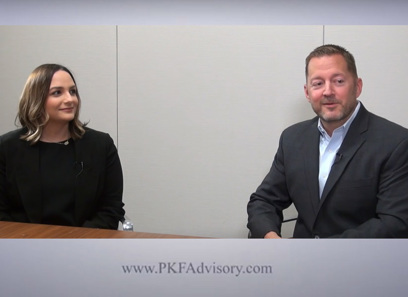The Duty of Mergers and Acquisitions fit Market Fads and Developments
Mergers and procurements have progressively become a critical mechanism for organizations seeking to navigate the complexities of modern-day markets. By pooling resources and expertise, companies can not only boost their affordable edge however likewise catalyze technology with collaborative harmonies. As industries face quick technical developments and moving consumer demands, understanding the implications of M&A methods supplies important insights right into future fads. The inquiry remains: just how do these tactical actions truly influence the trajectory of whole sectors?
Understanding M&A Dynamics
Mergers and procurements (M&A) frequently offer as critical approaches for firms seeking development, affordable benefit, or market combination. Recognizing the characteristics of M&A is necessary for both professionals and stakeholders in navigating the complex landscape of company deals. M&A procedures commonly include numerous phases, including target recognition, due diligence, negotiation, and assimilation, each lugging its very own challenges and dangers.
The motivations behind M&A can differ dramatically; companies may pursue these approaches to access brand-new markets, obtain innovative technologies, or achieve functional synergies. In addition, changes in economic problems and regulative atmospheres can influence M&An activity, motivating firms to adapt their strategies accordingly.
Effective implementation of M&A deals calls for a comprehensive understanding of the cultural, economic, and functional implications entailed. Business should assess not just the measurable aspects, such as valuation and monetary performance, yet likewise the qualitative elements, consisting of business society and worker sentiment. Ultimately, the ability to efficiently manage these dynamics can identify the success or failing of an M&An effort, underscoring the demand for tactical preparation and informed decision-making throughout the process.
Influence On Market Competition
The end results of mergings and acquisitions on market competitors can be profound, usually reshaping industry landscapes. When firms consolidate, they regularly enhance their market power, allowing them to set rates a lot more openly and dictate terms to clients and providers. This raised power can result in lowered competition, as smaller players might struggle to contend versus the combined resources and abilities of the joined entity.
Moreover, M&An activities can lead to market focus, where less companies control the industry. The competitive ramifications of purchases and mergings are not generally unfavorable.

Development Through Partnership
Collaboration between firms can function as a substantial driver for development, enabling companies to utilize each other's strengths and sources. They create an abundant ground for the growth of new ideas, items, and innovations when companies combine their know-how. This synergy commonly results in boosted analytic capabilities, allowing companies to take on complicated challenges that would be hard to deal with independently.
Additionally, joint initiatives can speed up the r & d process. By pooling their technological capabilities and intellectual capital, business can significantly reduce time-to-market for innovative services. This is particularly evident in industries where rapid technical improvements are vital, such as telecoms, pharmaceuticals, and details modern technology.
Furthermore, partnerships formed with mergings and procurements can cultivate a culture of advancement - Mergers and Acquisitions. When employees from various histories and skill sets come together, they add diverse point of views that can motivate creativity and bring about breakthrough advancements. This collective atmosphere not only enhances employee morale yet also boosts retention rates, as individuals feel more taken part in a dynamic work environment
Sector-Specific Fads
Industry characteristics are progressively shaped by sector-specific fads that affect the strategies and outcomes of mergings and acquisitions. Various markets are experiencing unique pressures and chances, triggering business to seek M&A as a strategic tool to resolve these obstacles.
In innovation, the fast pace of development and electronic change drives firms to get start-ups to improve their capabilities and expand their item offerings. Likewise, the medical care field is seeing debt consolidation as organizations look for to enhance operational efficiencies and expand their solution arrays in action to regulatory adjustments and evolving patient needs.
The consumer goods sector is likewise undergoing substantial adjustments, with sustainability becoming a vital focus. Mergers and acquisitions are being leveraged to include eco-friendly techniques and items, lining up with consumer choices and governing expectations.
In finance, the rise of fintech is triggering traditional institutions to get ingenious tech companies to remain competitive and enhance consumer experiences. These sector-specific patterns not only determine the nature of M&An activity however likewise highlight the requirement for firms to stay nimble in an ever-evolving market landscape. Recognizing these patterns is necessary for stakeholders to prepare for shifts and take advantage of chances efficiently.
Future Overview of M&A
A transformative era is on the horizon for procurements and mergers, driven by technical advancements, regulative adjustments, and shifting customer behaviors. Companies are progressively leveraging data analytics and synthetic knowledge to recognize prospective targets and simplify due diligence processes, improving decision-making effectiveness. This technical integration not only increases purchase timelines but also enhances the precision of evaluations.

As customer preferences proceed to progress, specifically towards sustainability and electronic engagement, companies will certainly seek purchases that straighten with these trends. Business concentrating on green innovations or electronic platforms are anticipated to come to be attractive targets, reflecting a wider sector commitment to adapt and prosper in changing market problems.
Inevitably, the future of M&A will certainly be defined by agility and responsiveness, as firms acknowledge the requirement of critical partnerships to remain competitive. The landscape will favor those that can properly align their objectives with emerging patterns while balancing technological innovations and regulatory complexities.
Final Thought
By helping with resource sharing and know-how combination, M&An initiatives drive functional efficiencies and increase the development of brand-new innovations. As markets proceed to advance in action to consumer needs and market changes, the calculated pursuit of M&A will continue to be necessary in forming future patterns and cultivating lasting growth.
As industries grapple with fast technological innovations and changing customer needs, understanding the effects of M&A strategies uses beneficial insights into future trends.Mergers and procurements (M&A) regularly offer as critical methods for companies looking for growth, competitive benefit, or market debt consolidation.Moreover, M&A tasks can lead to market focus, where fewer companies dominate the market. These sector-specific fads not just dictate the nature of M&An activity yet likewise highlight the necessity for firms to continue to be agile in an ever-evolving market landscape. As industries proceed to advance Mergers and Acquisitions in action to customer demands and market shifts, the tactical quest of M&A will certainly remain necessary in shaping future fads and cultivating lasting growth.